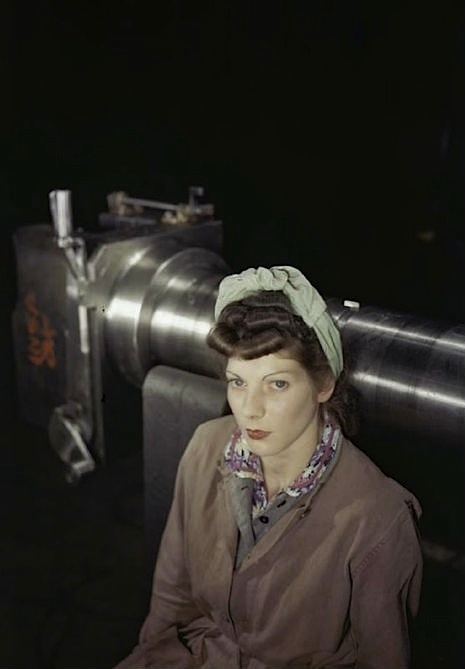
Miss M. Greatorex: a war worker in the manufacture of 17-pdr anti-tank guns, 1943.
The coloring and composition of some of these photographs look like paintings by the great Dutch masters, but they were taken by photographers from the Ministry of Information to document working life on the British homefront during the Second World War.
Women workers were essential to the war effort, and although working class women had been working prior to the war, the number of British women workers involved in heavy industry increased “from 19.75% to 27% from 1938-1945.” The number of skilled and semi-skilled female workers working in the engineering industry increased from 75% to 85% between 1940 and 1942. However, as documented in The Economic History Review the rates of pay for women—surprise, surprise—were less than their male counterparts.
The photographs are part of the Imperial War Museums’ history of modern Britain’s “wartime experience,” and more images can be seen here.
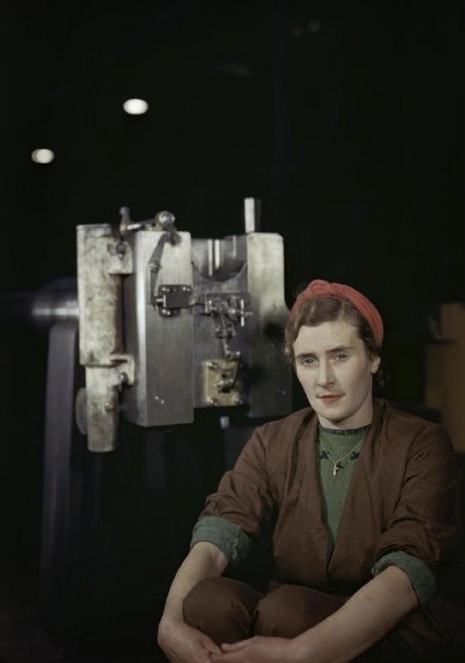
Mrs. C. Graham, war worker in the manufacture of 17-pdr anti-tank guns, 1943.
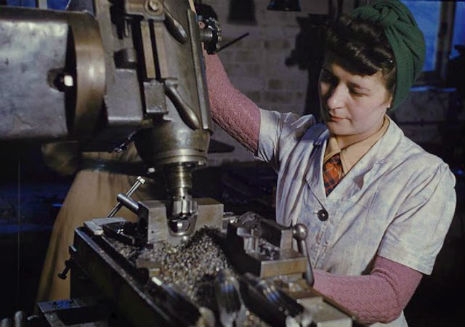
Unnamed war worker involved in milling breech blocks, 1943.

Miss Miriam Highams welding the saddle of a 25 pounder gun.
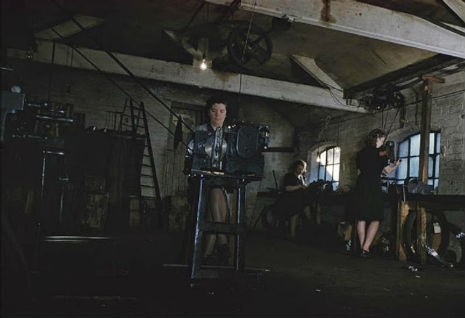
Women at work in a makeshift factory, 1943.
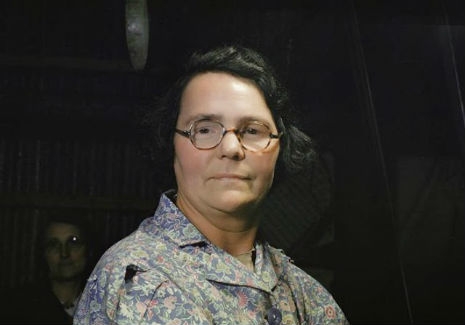
Mrs. Chaulkey, portrait of a war worker, 1943.
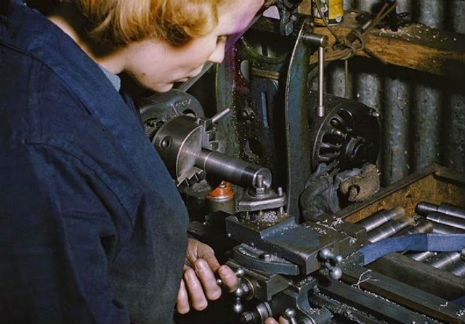
Mrs. Lusby, part-time worker, levelling off and making the firing pin in the first stages of breech block production, 1943.

Miss Norris welding the side seams of drum containers, 1944.

Mrs. Mears making closure rings for drum containers. The drums were used to store the products of a chemical factory run by the Ministry of Supply, 1944.
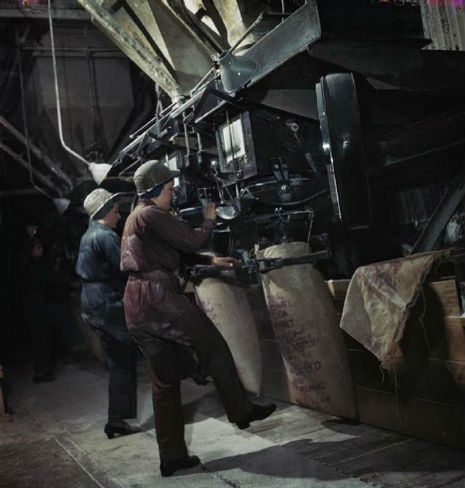
Women packing bicarbonate of soda at a Ministry of Supply chemical factory, 1944.
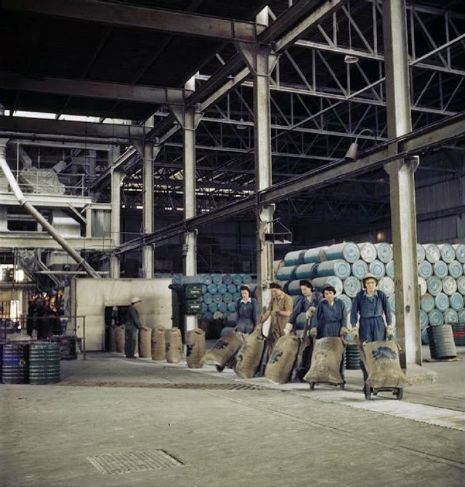
Women stacking bicarbonate of soda at a Ministry of Supply chemical factory, 1944.
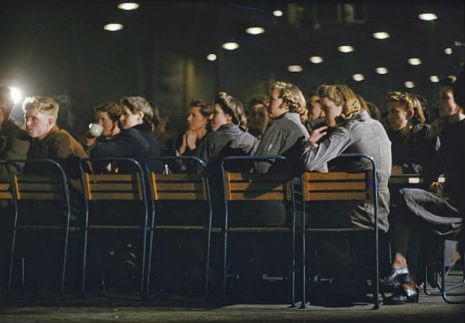
Lunchtime at the workers’ canteen.

Unnamed draughtswoman drawing a 25-pounder gun, 1942.
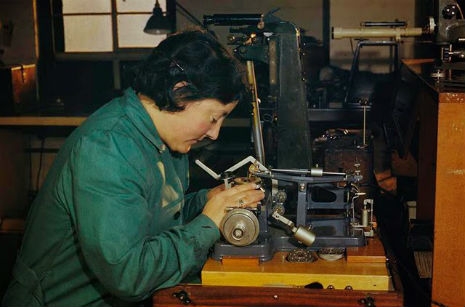
A craftswoman sets machinery for cutting the graticule of a precision measuring instrument, 1945.
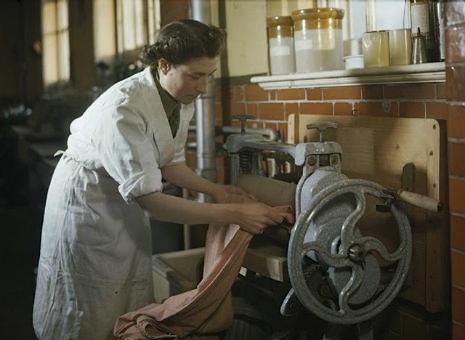
Corporal Jean Russel using a mangle in the process of washing clothes. This was for a voluntary Domestic Science organised by the London District of the Army Education Scheme, together with the London County Council, at Avondale Park School, Notting Hill Gate, London.
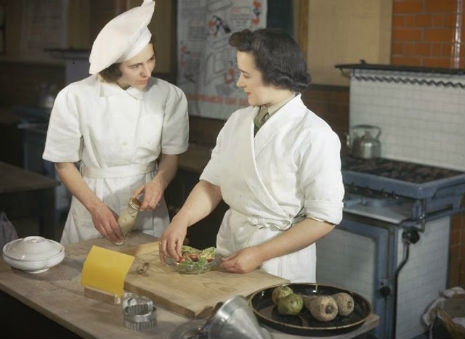
Chief Instructor Mrs. Evans showing Corporal Margaret Dener how to make a salad as part of the Domestic Science course at Avondale Park.
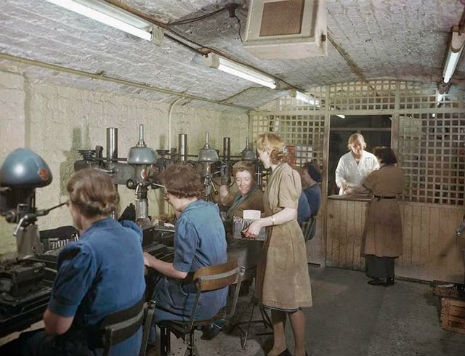
Women working in an underground factory in Liverpool. The woman carrying the box is Mrs M. Porter, the Pressing Bay Forewoman, who is giving out shell caps for pressing.
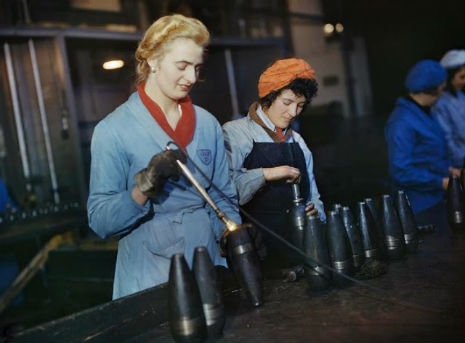
Women inspecting 25 pounder shells at the small arms factory of J. & F. Pool Ltd in Hayle, Cornwall, 1943.
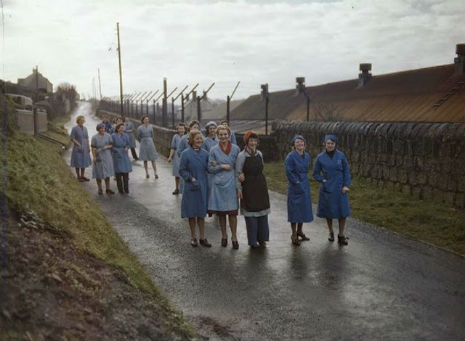
Workers on their way to J. & F. Pool, which produced one million trench mortar bombs, 1943.
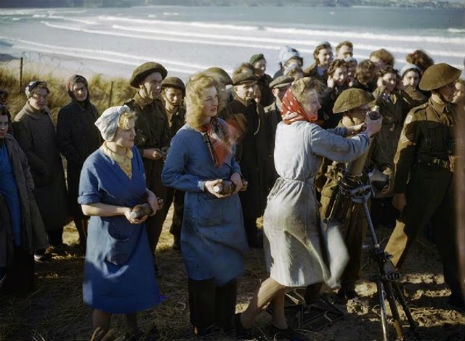
Workers from J. & F. Poole being given a demonstration of the mortar bombs they manufactured.
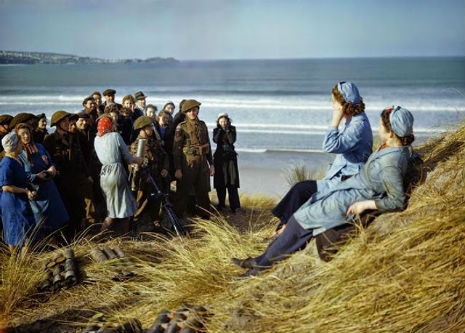
Via Vintage Everyday